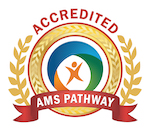At this time of year we are always more aware of giving thanks for what we have as we gather with friend and family to celebrate Thanksgiving and all that it brings.
At our school our children delight in preparing for a special “feast” or celebration with friends where they express their thanks for what they hold dear, their mom, their dad, their baby, their pet, their teacher, their home, their bed…the list goes on and on and is heartwarming to see their faces when they speak.

Luckily our Montessori curriculum includes a Grace and Courtesy component, and on a daily basis we model and teach and model grace and courtesy. We expect our students to say thank you to a friend who holds the door, or helps them clean up, to a teacher who helps with laces or zippers, or a parent who comes to read a book or do a craft.
“Thank you” – two very small and simple words that are big and important to both the user and the receiver. Showing and receiving gratitude makes a person feel good and sets them up for positive interactions and relationships. Gratitude is a skill that will help children grow into healthy adults, therefore it is really important that we help our children focus on what they can and should be thankful for apart from material things.
Dr. Monisha Vasa in an article on mindbodygreen.com recommends the following to encourage attitudes of gratitude in children:
· Have them engage in random acts of kindness
· Spend time in nature and learn to appreciate its beauty
· Create a daily reflection ritual on the highs and lows, joys and challenges of the day
· Practice mindfulness at meals, exclude toys and electronics to allow appreciation for the meal
· Help children volunteer in age appropriate ways
We all know the importance of role modeling, if we can make gratitude part of our daily lives our children will too.
Colette B. Cross





